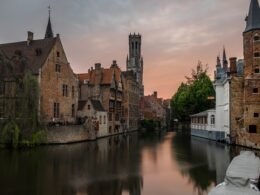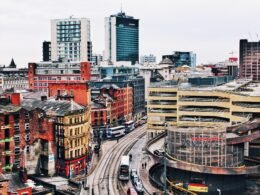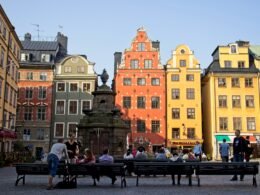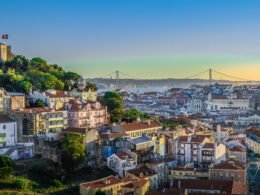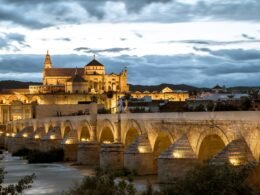Looking to plan a trip through Japan? Japan is a wonderful place to experience a land full of ancient history and culture side-by-side with the latest in technology and today’s trends. If you’re planning to visit this beautiful country, you’ll want to see as much of it as possible. Japan has an incredibly efficient rail system which makes traveling by train one of the best way for visitors to get around the country.

To travel around Japan by train, get the Japan Rail Pass in advance. The pass is a multi-use ticket that allows you to travel on JR national trains for much cheaper than buying individual tickets. To follow this 2-week itinerary, you’ll need a pass that’s valid for either 7 or 14 days depending on where you fly in/out of the country.
If you only have 2 weeks to spend in Japan, here’s the Japan itinerary we recommend following. Of course, you can adjust it as needed to match your preferences.
Table of Contents
- Fly to Tokyo
- Day 1 Tokyo: Akihabara, Jinbocho, Ueno Park
- Day 2 Tokyo: Shibuya, Harajuku, and Shinjuku
- Day 3 Tokyo: Studio Ghibli Museum, Inokashira Park, and Shimokitazawa
- Day 4 Tokyo: DisneySea
- Day 5 Tokyo: Tsukiji Outer Market, Chiyoda, and Travel to Kanazawa
- Day 6 Kanazawa: Kenrokuen Garden, Kanazawa Castle, and Higashi-chaya-gai
- Day 7 Kanazawa: Nagamachi District and Travel to Kyoto
- Day 8 Kyoto: Araskiyama Bamboo Grove, Nishiki Market, and Temples
- Day 9 Kyoto: Mount Inari and Gion District
- Day 10 Kyoto: Sannenzaka and Travel to Nara
- Day 11 Nara: Exploring Nara and Travel to Osaka
- Day 12 Osaka: Bike Tour and Food Tour
- Day 13 Osaka: Osaka Castle, Kaiykan Aquarium, and Umeda Sky Building
- Day 14 Osaka: Shitennoji Temple and Flight Home
- Final Thoughts
Fly to Tokyo
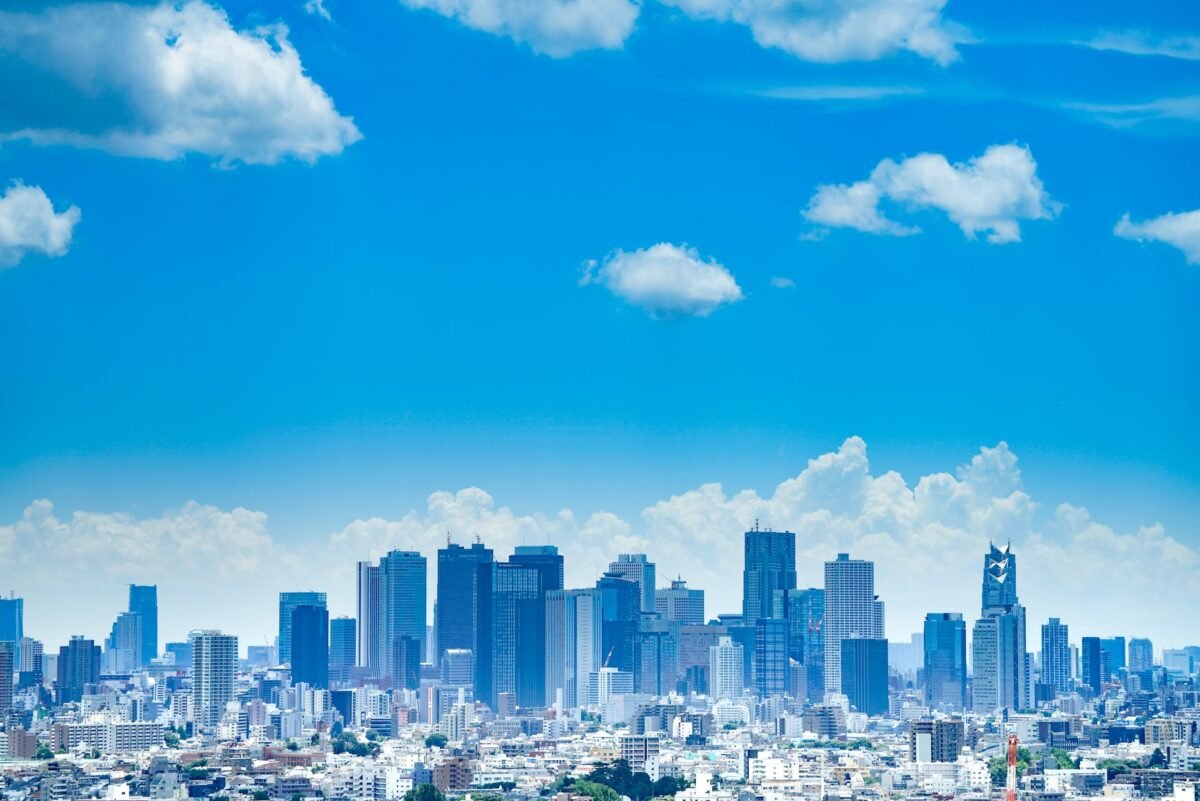
Begin your visit to Japan by flying to Tokyo. The city has two international airports, Haneda (HND) and Narita (NRT). Depending on where your flight departs from and what time you arrive in Tokyo, you may need some time to recover from your flight on your first day in Tokyo.
There’s nowhere else quite like Tokyo. It has a mix of traditional Japanese culture, modern city life, and rapidly-changing pop culture fads all existing on top of each other. We’ve planned 5 days of exploring this cool city to give you a feel of Tokyo while still leaving enough time to dive deeper into the best of Japan.
Day 1 Tokyo: Akihabara, Jinbocho, Ueno Park
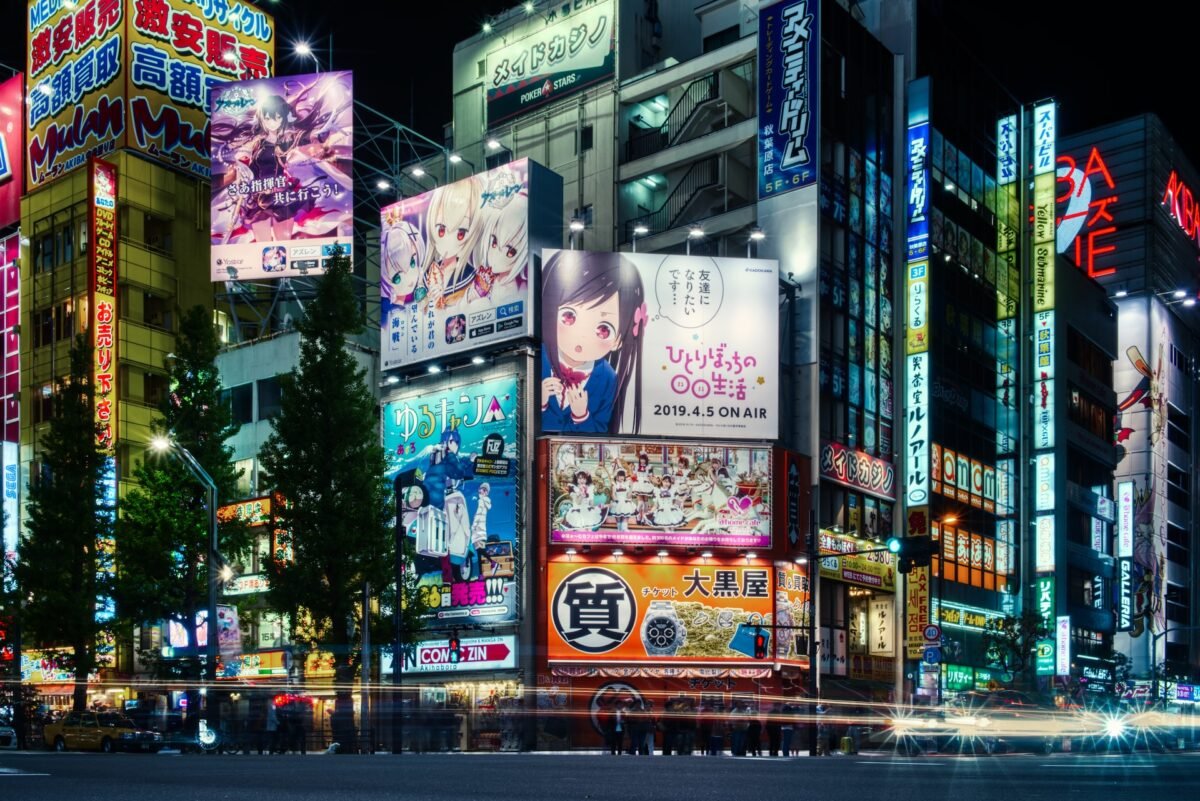
Start off the morning in Akihabara, Tokyo’s Electric Town. This neighborhood is the heart of the anime and gaming culture in Japan. Expect to find everything pop culture and a bit nerdy here.
Grab some Taiyaki. The fish-shaped cake is especially fun to get from the Magikarp Taiyaki stand because it comes in the shape of the beloved Pokemon character.
Walk down Chuo Dori, the main street in the neighborhood. Make sure to stop in some of the arcades where you can play everything from classic arm crane games to VR games. Don’t leave without stopping to shop at Don Quijote. You’ll find some of the best Japanese and Korean cosmetics in the world as well as 6 floors full of other goods. For even more anime and otaku good, head to Akiba Cultures Zone or Mandrake.

Next, head to Jinbocho, the used book capital of Tokyo with over 150 bookstores. Naturally, you’ll spend lots of time browsing through bookstores here. Isseido Booksellers is a must-visit to see the two floors of vintage books and scrolls, including rare illustrated manuscripts. This area has great curry places, so it’s a good idea to try curry at lunch.
Afterward, spend the afternoon in Ueno Park. The huge park has over 8,000 trees. Depending on the season, it’s home to beautiful fall foliage or cherry blossoms. During the rest of the year, there’s still plenty to admire. You can see the Shinobazu Pond, leave Ema (a wooden plaque with a wish) outside a shrine or temple, paddle on the duck boats, or climb the stairs to the Kiyomizu Kannon Temple. Plus, the park also has multiple museums and a zoo on the grounds. It’s not hard to spend hours here.
Day 2 Tokyo: Shibuya, Harajuku, and Shinjuku
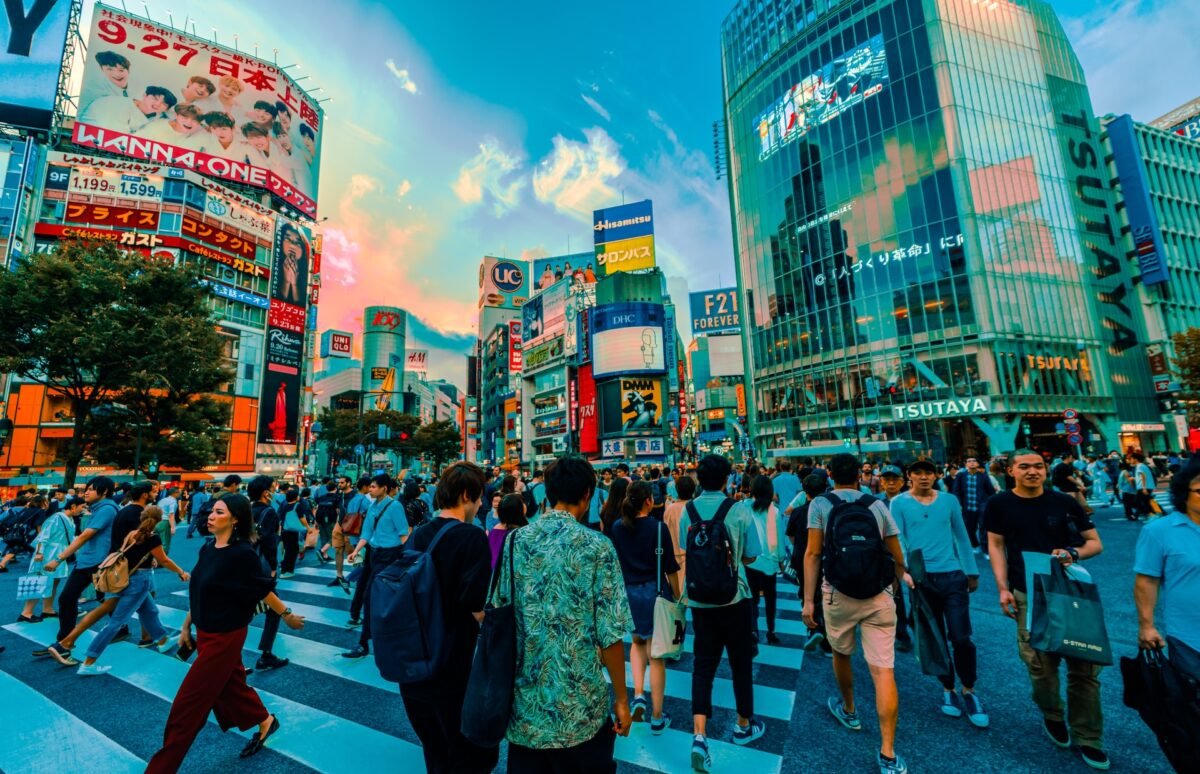
Start the day off at Shibuya, one of the busiest areas in the city. Stop at Depachinka, an underground shopping center, to grab breakfast. Then, head to Shibuya Crossing, also known as Scramble Crossing, during rush hour. If you’d rather view the madness from afar, the Shibuya Station walkway, the Hikarie building 11th floor, and the nearby Starbucks are good vantage points.
While in the area, stop by the bronze statue of Hachiko, a loyal dog immortalized outside of Shibuya Station. Then, check out Shibuya 109 for the trendiest fashions in the country.
Afterward, head to Harajuku, another neighborhood for those interested in fashion. You’ll find the best stuff on Takeshita Dori, the street that’s the mecca for Japanese Street Fashion. Make sure to grab a crepe to eat to keep you going as you browse. Plan to spend the majority of your day here.
Finish up the night in Shinjuku. This neon minicity is where to find the best nightlife in Tokyo. Stop at one of the ramen shops for dinner. Do a little more shopping at Lumine 1 & 2. If you’re interested in bar hopping, consider taking a guided tour. You can wander around on your own, but it’s easier with a guide. If you’d like to explore solo, try Omoide Yokocho where you’ll find cute tiny restaurants and other venues that get busier as the night progresses.
Day 3 Tokyo: Studio Ghibli Museum, Inokashira Park, and Shimokitazawa
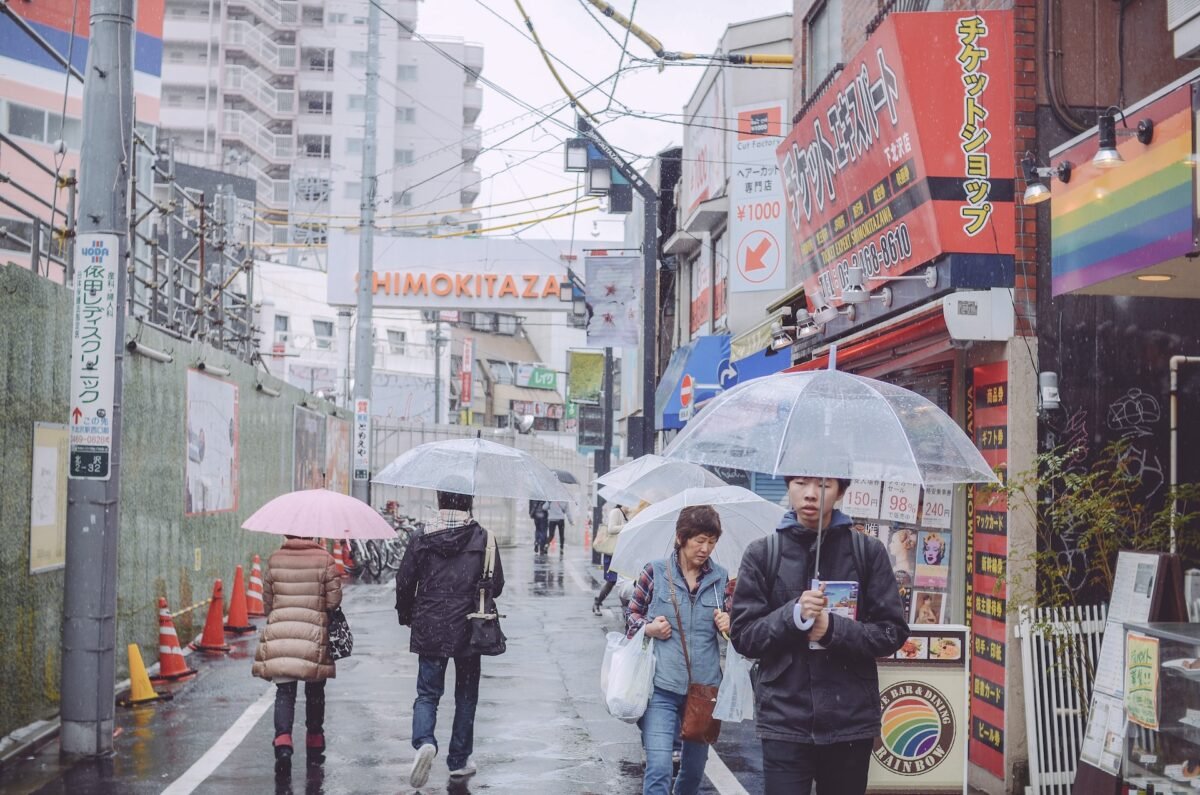
If you’re a fan of the masterpiece films created by Hayao Miyazaki, the studio Ghibli Museum is a must-visit destination. You’ll have to plan in advance to get tickets, but it’s worth it to see a behind-the-scenes insight into how the films are made in a museum that’s full of the studio’s signature whimsy.
After visiting the museum, explore the rest of Inokashira Park. The beautiful green oasis is the perfect place for an idyllic afternoon. Rent a row boat, visit the zoo and aquarium, and spend time enjoying the peaceful landscape.
For a low-key, relaxing evening, explore Shimokitazawa, Tokyo’s cool hipster neighborhood. Here you can browse through vintage shops, like Stick Out, New York Joe Exchange, and Little Trip to Heaven, for one-of-a-kind pieces you won’t find anywhere else. There are also all kinds of record stores and cool coffee shops and restaurants to explore. Flipper’s is one of the most popular spots with a line out the door waiting for the fluffiest pancakes in Tokyo. For one last homage to Studio Ghibli, stop by the Shirohige Cream Puff Factory for cream puffs shaped like Totoro.
Day 4 Tokyo: DisneySea
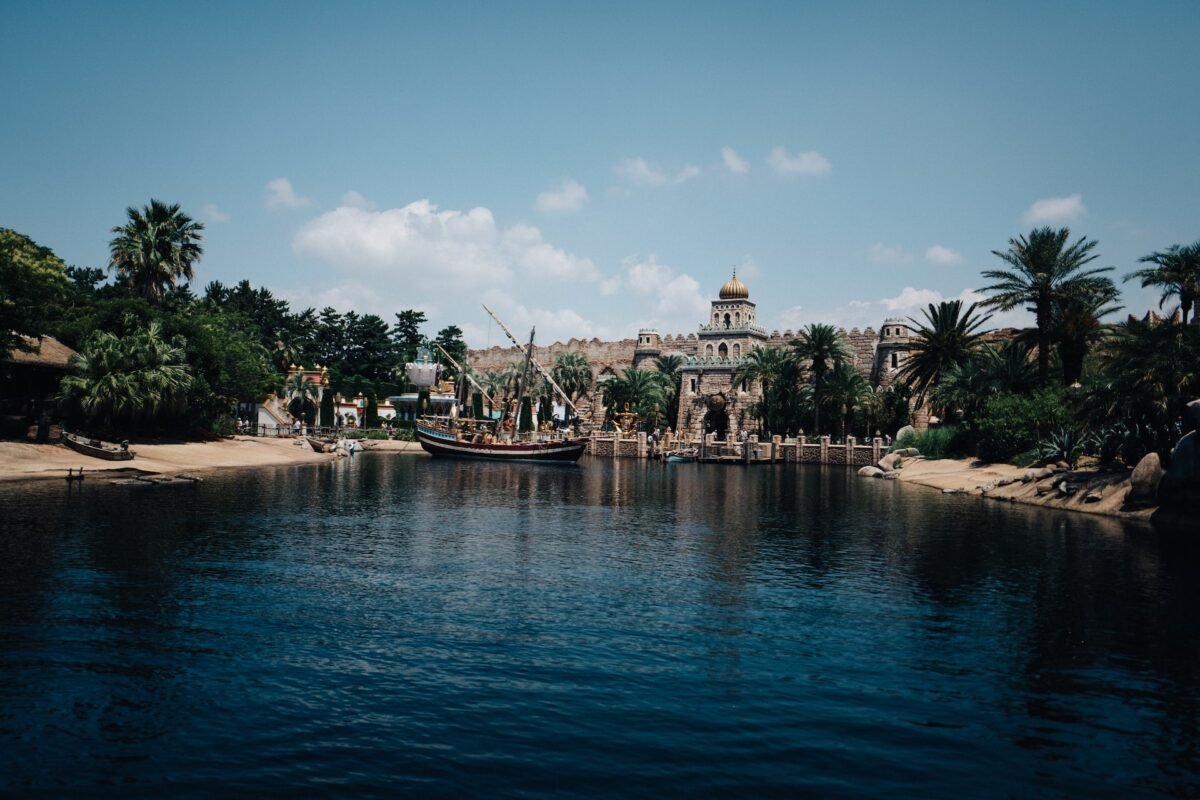
Tokyo has both a Disneyland and a DisneySea. While both are fun, the Tokyo DisneySea is the only Disney park that’s completely ocean-themed. You’ll get to explore areas like the Mediterranean Harbour based on Italian port towns during the Renaissance, Mysterious Island inspired by Jules Verne’s sci-fi books, the Mermaid Lagoon based on the Little Mermaid, and other fun attractions that aren’t at other Disney parks. Plan to spend the entire day exploring, riding rides, and enjoying all the unique details.
Try to plan your visit to DisneySea on a weekday rather than a weekend. The park is extremely popular and while it won’t be anywhere near empty on a weekday, it’s more manageable then.
Even if you’re not a huge Disney fan, this park is worth visiting. DisneySea was designed to have a more romantic feel than other Disney parks, and it has a somewhat more grown-up atmosphere.
Day 5 Tokyo: Tsukiji Outer Market, Chiyoda, and Travel to Kanazawa
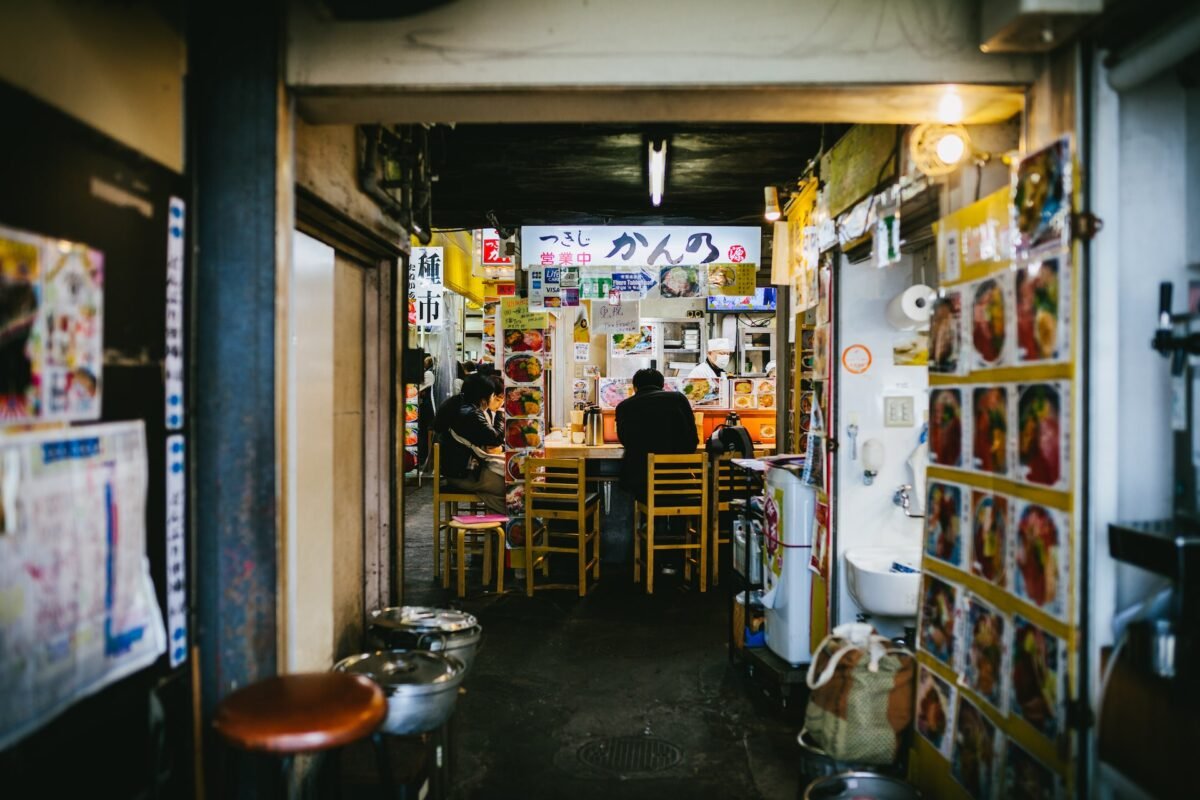
Start off the morning with a fresh sushi breakfast at Tsukiji Outer Market. Some stalls are more popular than others, but you’ll get great sushi no matter which one you choose. The market is open to the public every day except Wednesday and Sunday. You’ll be able to browse the over 400 shops, grocers, and small restaurants all crowded into a small section of narrow alleys. If you have room, pick up a vibrantly colored ceramic to bring home as a souvenir.
Afterward, head to Chiyoda to see some of Tokyo’s biggest cultural attractions. Visit the Imperial Palace where the Japanese emperors have lived since 1888. Visit the Yasukuni Shrine, one of the most impressive shrines in the city. Walk to Tokyo Station to have lunch on Tokyo Ramen Street, a row of Japan’s best ramen shops beneath the station.
Wrap up your time in Tokyo by spending the afternoon in Daiba Park where you’ll have beautiful views of Rainbow Bridge. Then, take the JR Hokuriku Shinkansen directly to Kanazawa. The train ride will take between 2.5 to 3 hours.
Day 6 Kanazawa: Kenrokuen Garden, Kanazawa Castle, and Higashi-chaya-gai
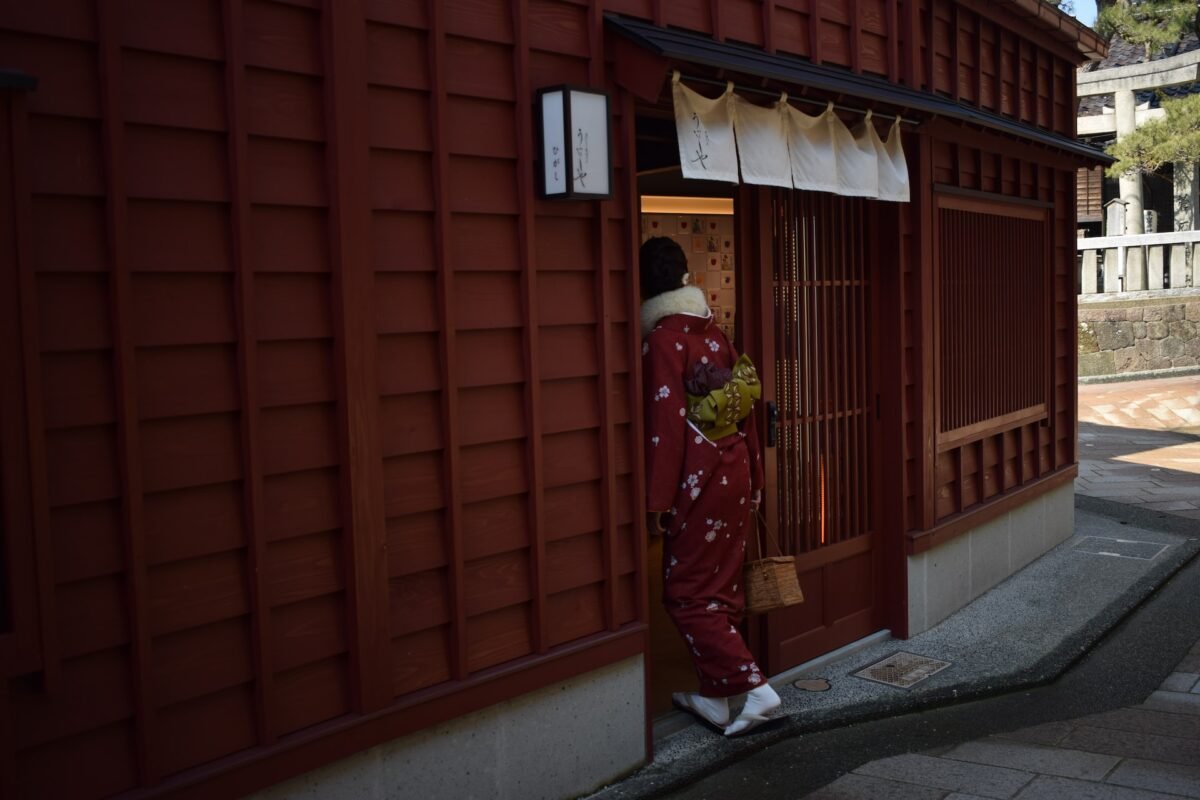
After the busyness of Tokyo, Kanazawa is refreshingly calm. The city is famous for its samurai and geisha neighborhoods as well as its high-quality seafood.
Start the morning at the beautifully-designed Kenrokuen Garden. It has a reputation as one of the top three gardens in Japan. Visit the Shiguretei Tea House to enjoy matcha tea and a snack in a beautiful glass-covered building. Next, visit Kanazawa Castle Park to see a replica of the castle that was originally built in 1580 for the Maeda clan.
Get lunch at the Omicho Market, where you’ll find over 200 stores selling fresh seafood and local products. Then, head to Higashi-chaya-gai, one of the beautifully preserved Geisha Districts. You’ll get to admire stunning examples of Japan’s traditional architecture. You can also rent a kimono to wear while you walk around if you’d like.
Day 7 Kanazawa: Nagamachi District and Travel to Kyoto
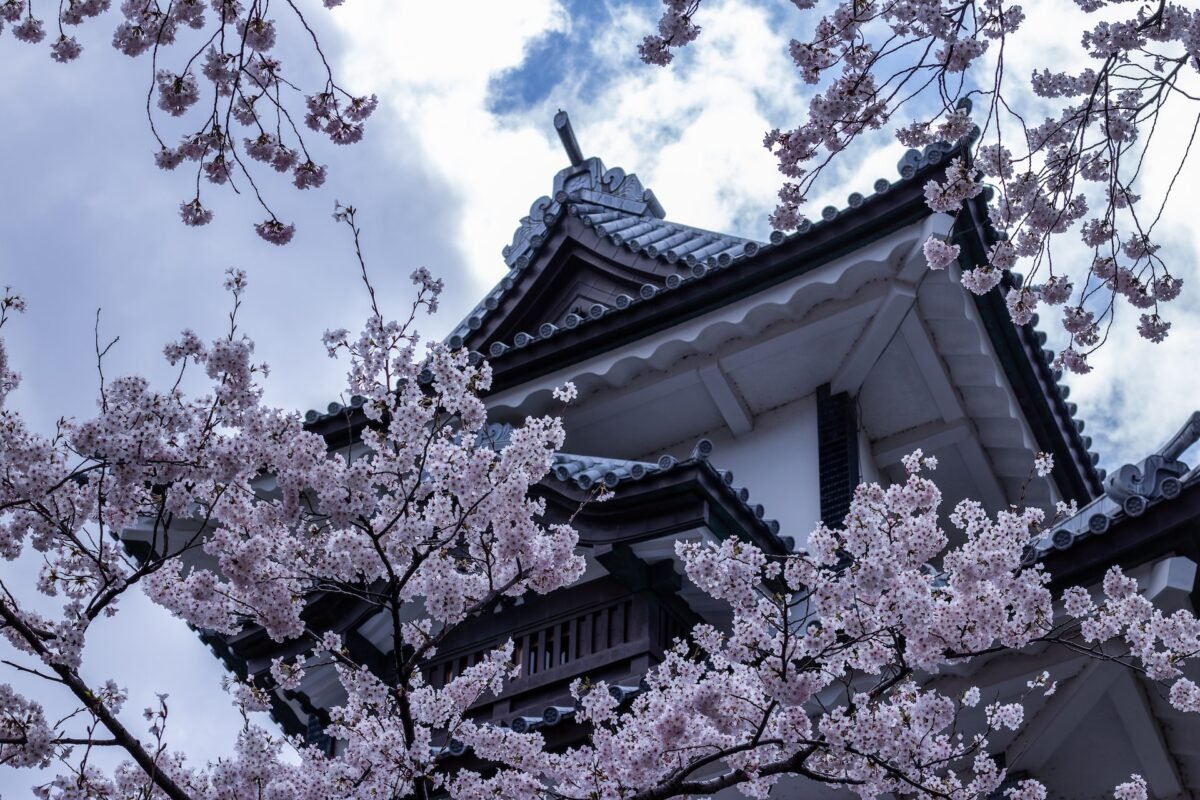
On your final day in Kanazawa, check out the D.T. Suzuki Museum, a small museum dedicated to the life of the prominent Buddhist philosopher (1870-1966). Besides the exhibitions, the clean, simple architecture is equally interesting.
Next, head to the Nagamachi District, the neighborhood where samurai lived during the Edo era. As you walk along the winding cobblestone streets, you can visit the Nomura Samurai House and the Shinise Kinenkan Museum. Make a stop by Kaburaki to find traditional Kutani ceramics. If you have time stop at the Kyukeikan Resthouse to talk to volunteers who can tell you more about the neighborhood and to see local craft displays.
After wrapping up your time exploring the Nagamachi District, get ready to take the train from Kanazawa to Kyoto. The Thunderbird Limited Express runs between Kanazawa and Osaka with a stop at Kyoto. It will take a little over 2 hours to reach Kyoto Station.
Day 8 Kyoto: Araskiyama Bamboo Grove, Nishiki Market, and Temples

Kyoto is best known for its Buddhist temples, but there are so many things to do in this fascinating city. Kyoto moves at a slower pace than Tokyo but is still busier than Kanazawa.
Get up early to beat the crowds at the Arashiyama Bamboo Grove. Walk along the Katsura River and watch the traditional wooden boats pass by. When the % Arabica Kyoto Arashiyama opens up, stop by for some of the excellent coffee.
Next head to the Monkey Park Iwatayama where you’ll take a steep climb to the top of the mountain and see wild Japanese macaque monkeys. For lunch, go to the Nishiki Market. Not only is it the perfect place for foodies, but there is also plenty of shopping nearby. In the afternoon, see the city’s most visited temples. Kinkaku-ji temple and Ginkaku-ji temple are both impressive, but if you only have time to visit one, make it Nanzen-ji temple. This 13th-century temple has a grand entrance, Roman-style aqueducts, and multiple sub-temples.
Day 9 Kyoto: Mount Inari and Gion District
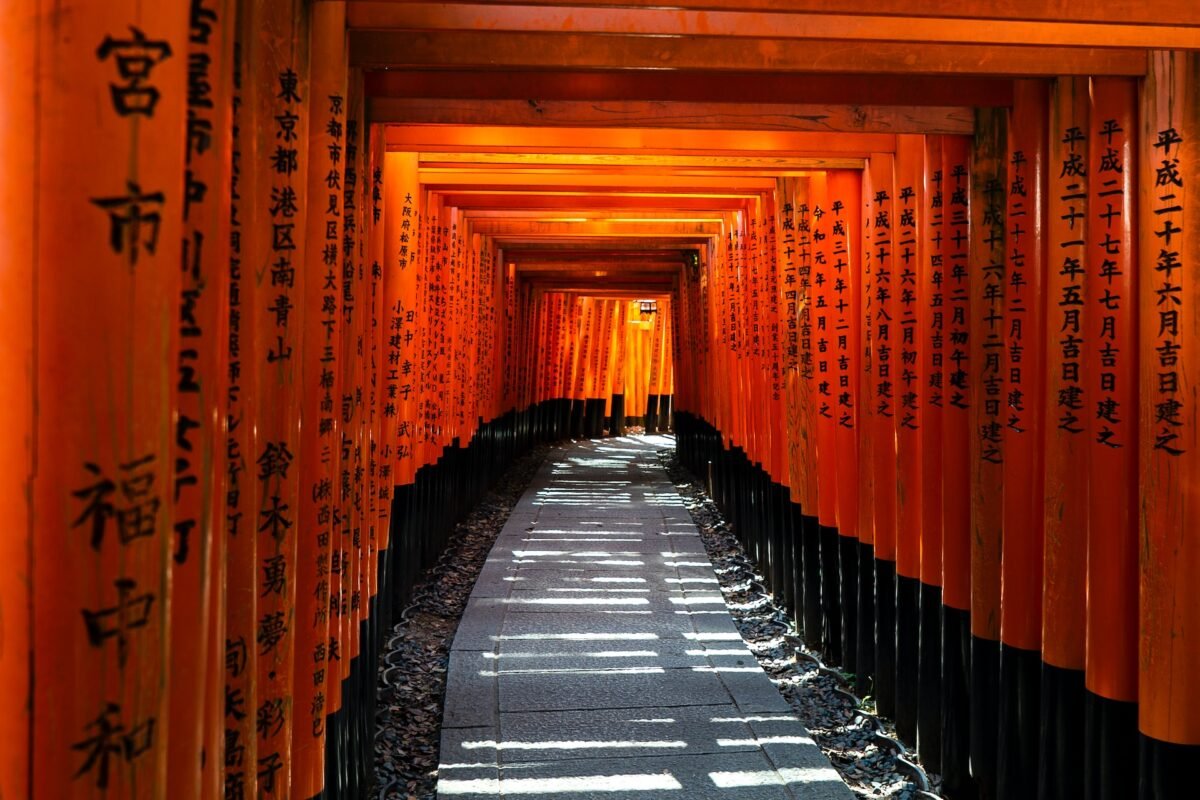
Begin the morning at the Fushimi Inari Taisha, the shrine with vivid red Torri gates is one of Kyoto’s most visited sites. Then, take the hike up Mount Inari. It takes 2-3 hours there and back, and you’ll have spectacular views as you travel up the trail.
For lunch, go back to the Nishiki Market for a second time. You can try out some of the food you weren’t able to sample on the previous day. A few things to try are Tako tamago (a small octopus and a quail egg), mochi (a sticky rice cake), and goma dango (sesame dumplings).
After you’ve spent time at the market, head to the Gion District. Start by going to the Kiyomizu-dera temple. You’ll be able to enjoy a view over Kyoto from the temple’s wooden terrace. While you’re there visit the Jishu Shrine and the Otowa Waterfall.
Spend the evening exploring the rest of the Gion District. The picturesque district is home to antique wooden townhouses called machiya. Many of these buildings have been converted into art galleries, antique shops, and other shops. Make sure to stop in one of the many teahouses in the district. Ichiriki Ochaya is one of the most famous, but any of the teahouses are a relaxing, tranquil place to spend time.
Day 10 Kyoto: Sannenzaka and Travel to Nara

On your last morning in Kyoto, spend time exploring Sannenzaka and Ninenzaka. These cobblestone streets are filled with traditional wooden homes and buildings. You may have had time to see several of the temples earlier, but you’ll have time to shop and get lunch in one of the restaurants.
In the afternoon, you’ll head from Kyoto to Nara. Take the Miyakoji rapid train from Kyoto Station to JR Nara Station. The trip only takes about 45 minutes, so you’ll have time to explore in the evening.
Spend the evening strolling in Naramachi, an area filled with traditional Japanese houses. You’ll enjoy a relaxing evening wandering the streets and picking out a couple of traditional souvenirs. If you have more time to explore, you can also go shopping in the Higashimukhi District.
Day 11 Nara: Exploring Nara and Travel to Osaka

Nara was the first capital of Japan from the years 710 to 784. Ancient Nara has been named a UNESCO World Heritage site, and there are plenty of attractions to visit in the city.
Start by visiting Nara Park where you’ll see the famous wild sika deer roaming. These animals are considered national treasures, but you’re able to feed them and pet them. While in the park visit the grounds of the Kofukuji temple. Then, visit Todaiji, the most famous temple in Nara. Inside the main hall, you’ll see the Big Buddha, a statue that’s about 50 feet tall.

Make your way to the Kasuga Grand Shrine. This popular Shinto shrine dates back to 768 and is best known for its lanterns. In the afternoon head back into town towards the train station. Pick up some treats at Nakatanidou. You can watch the traditional process of making mochi at this famous mochi shop.
Once you’ve wrapped up your time in Nara, it’s time to head to Osaka. You can take the Yamatoji rapid train from JR Nara Station to JR Osaka Station. The trip takes just 45 minutes.
On your first night in Osaka, go to Dontobori Street. The neon-lit street has all kinds of delicious street food and great restaurants.
Day 12 Osaka: Bike Tour and Food Tour

The third-largest city in Japan, Osaka is an important cultural and historic site, and it’s also one of the best cities in the country for foodies to visit. The city was mostly destroyed during WWII, so you may notice that the city doesn’t have the same picturesque architecture as some other places in Japan. Despite this, Osaka has a lot of great qualities.
Start off the morning with a half-day bike tour of Osaka. It’s a great way to get your bearings in the city, and you’ll have a guide to show you some of Osaka’s best sites. If anything catches your eye, you can return to explore later during your trip.
Then, in the afternoon either take a food tour or book a cooking class. You could explore Osaka’s cuisine on your own, but with limited time, a food tour helps you find all the best places more easily. If you’re more interested in cooking, companies like Eat Osaka offer classes where you can learn to make several Japanese dishes. Either way, you’ll have a great time experiencing Japan’s culinary capital.
Day 13 Osaka: Osaka Castle, Kaiykan Aquarium, and Umeda Sky Building

While in Osaka, you can’t skip Osaka Castle and Museum. Osaka-jo is one of Japan’s most famous sites. You’ll want to spend nearly the entire day visiting the multi-story castle and its grounds. Inside the castle, you’ll learn about the history of both the castle and Osaka through a collection of artifacts.
If you have time after visiting the castle, make your way to the Kaiyukan Aquarium. The aquarium, located in Osaka Bay, is one of the most impressive aquariums in the world. You’ll get the chance to see 30,000 creatures, including penguins, dolphins, whale sharks, and jellyfish.
In the evening, make your way to the Umeda Sky Building. The observation deck will give you beautiful views of the city and surrounding area. Once you’ve taken in the view, you can have dinner right below on Takimi Koji Gourmet Street.
Day 14 Osaka: Shitennoji Temple and Flight Home

On the morning of your last day in Osaka, visit Shitennoji Temple, the oldest Buddhist temple in Japan. You can enjoy the tranquil grounds containing several koi ponds and a Zen garden.
Before leaving Osaka, stop by Abeno Harukas, the highest skyscraper in Japan. You can visit the viewing platform at the very top. While you’re in the building, you can also visit the Abeno Harukas Kintetsu Department Store which is the largest department store in Japan.
If your flight home leaves from Osaka, you may have time to explore another neighborhood like Orange Street, a hip area with trendy cafes and stylish boutiques. If you need to return to Tokyo for your flight, you can take the Hikari train from Osaka to Tokyo in about 4 hours.
Final Thoughts
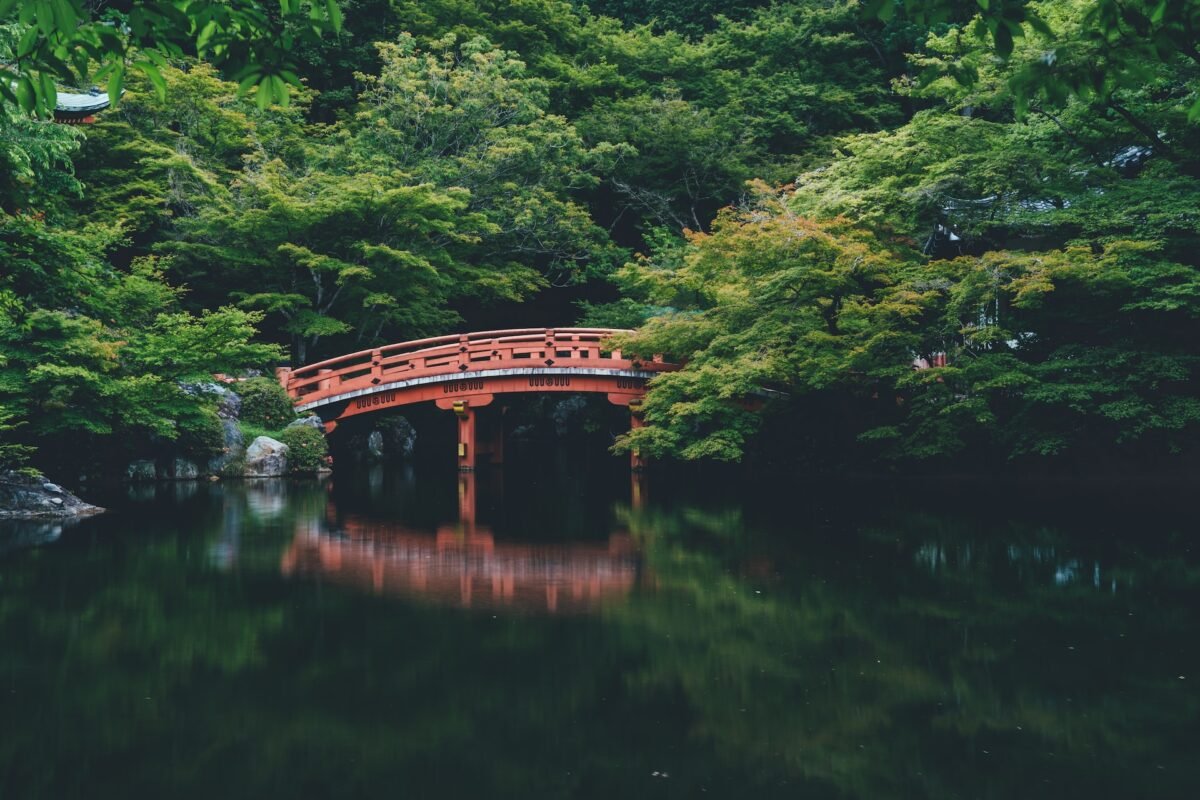
While Japan may not be large in terms of landmass, it has many rich, vibrant cities and towns worth exploring. You could spend much longer than 2 weeks seeing the best of Japan’s culture. Hopefully, this itinerary helps you plan an enjoyable trip!
If you’re looking for more guides to this unique country, check out the rest of our guides to Japan. For more ideas of what to do in Tokyo specifically, see the Tokyo Bucket List: 27 Things To Do In The Japanese Capital.







